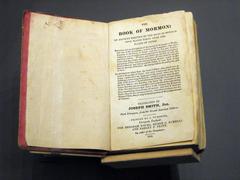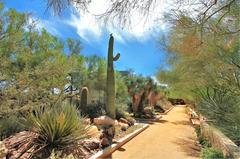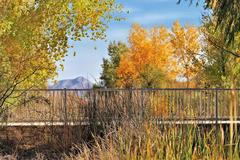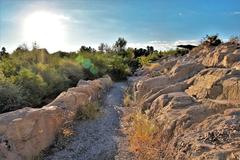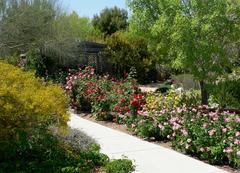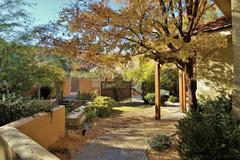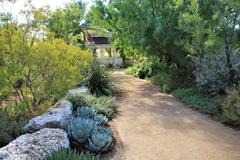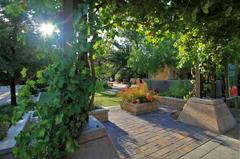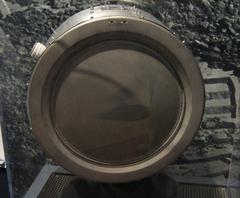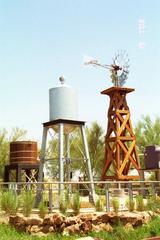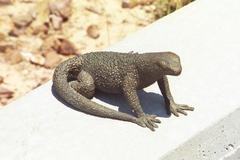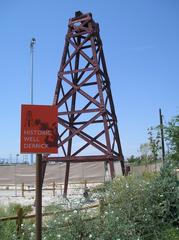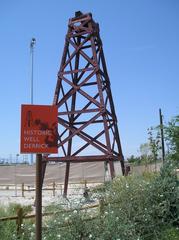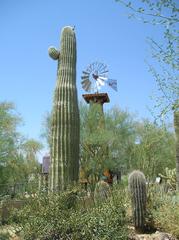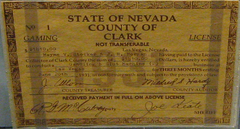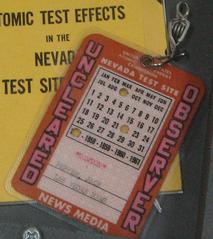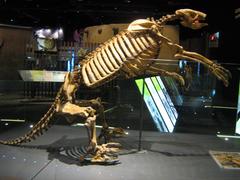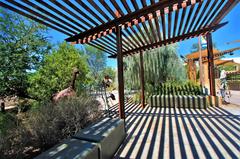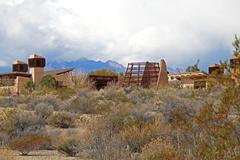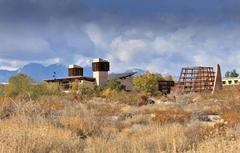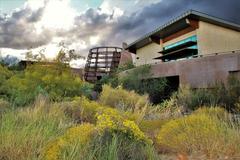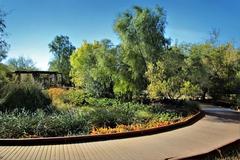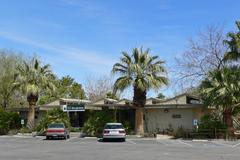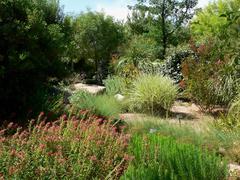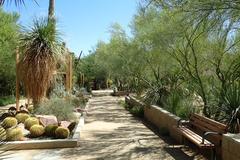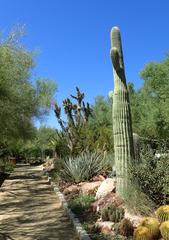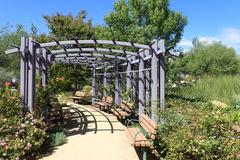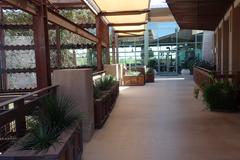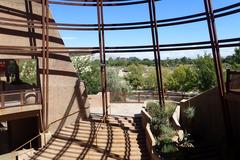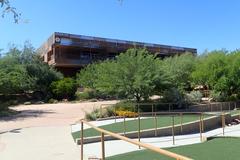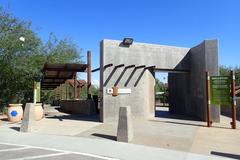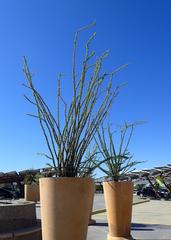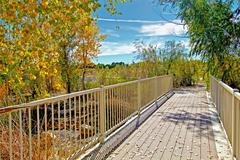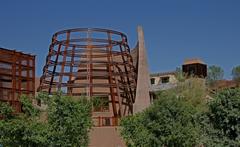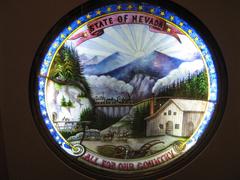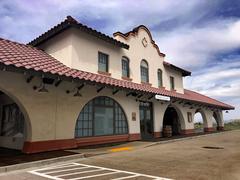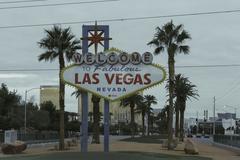
Springs Preserve: Visiting Hours, Tickets, and Historical Significance in Las Vegas
Date: 18/07/2024
Introduction
The Springs Preserve, a 180-acre site in the heart of Las Vegas, is a living testament to the city’s origins and its unique desert ecosystem. More than a collection of museums and gardens, it represents over 10,000 years of history and the lifeblood that has sustained human and ecological life in the Mojave Desert. This oasis, once the only reliable water source in the region, attracted Paleo-Indian tribes around 9000 BC and has continued to play a significant role throughout history. From the early Paiute inhabitants, who named the area ‘Las Vegas’ or ‘the meadows,’ to the arrival of Spanish explorers led by Rafael Rivera in 1829, the springs have seen the transformation of the desert into a bustling city (Springs Preserve).
The significance of the Springs Preserve extends beyond its historical roots; it also serves as a model for sustainability and environmental stewardship. With its LEED-certified buildings, extensive use of renewable energy, and innovative water conservation techniques, the Preserve offers a glimpse into the future of sustainable living. Visitors can explore a variety of attractions, including the Nevada State Museum, the lush Botanical Gardens, and interactive exhibits such as the Flash Flood and Boomtown 1905. The Preserve’s commitment to education and community engagement is demonstrated through its numerous programs, workshops, and events that cater to all age groups (Springs Preserve). Whether you’re a history buff, nature enthusiast, or looking for family-friendly activities, the Springs Preserve provides a unique and enriching experience that highlights the delicate balance between human activity and the natural world.
Table of Contents
- [Explore the Springs Preserve: Visiting Hours, Tickets, and Historical Significance in Las Vegas](#explore-the-springs-preserve-visiting-hours-tickets-and-historical-significance-in-las-vegasexplore-the-springs-preserve—visiting-hours-tickets-and-historical-significance-in-las-vegas)
- [A Historical Oasis: The Birthplace of Las Vegas](#a-historical-oasis-the-birthplace-of-las-vegasa-historical-oasis—the-birthplace-of-las-vegas)
- [Early Inhabitants](#early-inhabitantsearly-inhabitants)
- [Arrival of Spanish Explorers](#arrival-of-spanish-explorersarrival-of-spanish-explorers)
- [Mormon Settlement](#mormon-settlementmormon-settlement)
- [From Ranch to Railroad Town: Shaping Modern Las Vegas](#from-ranch-to-railroad-town-shaping-modern-las-vegasfrom-ranch-to-railroad-town—shaping-modern-las-vegas)
- [The Ranch Period](#the-ranch-periodthe-ranch-period)
- [The Railroad and the Birth of a Town](#the-railroad-and-the-birth-of-a-townthe-railroad-and-the-birth-of-a-town)
- [A Resort Destination Emerges](#a-resort-destination-emergesa-resort-destination-emerges)
- [Springs Preserve Today: Preserving the Past, Inspiring the Future](#springs-preserve-today-preserving-the-past-inspiring-the-futuresprings-preserve-today—preserving-the-past-inspiring-the-future)
- [Museum Exhibits](#museum-exhibitsmuseum-exhibits)
- [Botanical Gardens](#botanical-gardensbotanical-gardens)
- [Sustainability Initiatives](#sustainability-initiativessustainability-initiatives)
- [Practical Information for Visitors](#practical-information-for-visitorspractical-information-for-visitors)
- [Visiting Hours](#visiting-hoursvisiting-hours)
- [Ticket Prices](#ticket-pricesticket-prices)
- [Travel Tips](#travel-tipstravel-tips)
- [Nearby Attractions](#nearby-attractionsnearby-attractions)
- [Frequently Asked Questions (FAQ)](#frequently-asked-questions-faqfrequently-asked-questions-faq)
- [A Historical Oasis: The Birthplace of Las Vegas](#a-historical-oasis-the-birthplace-of-las-vegasa-historical-oasis—the-birthplace-of-las-vegas)
- [Conclusion and Call to Action](#conclusion-and-call-to-actionconclusion-and-call-to-action)
Explore the Springs Preserve: Visiting Hours, Tickets, and Historical Significance in Las Vegas
The Springs Preserve isn’t just a collection of museums and gardens; it’s a living testament to the very origins of Las Vegas. This 180-acre site encompasses the Las Vegas Springs, the lifeblood that drew people to this arid valley for millennia.
A Historical Oasis: The Birthplace of Las Vegas
For over 10,000 years, the Las Vegas Springs provided a rare source of water in the Mojave Desert, nurturing a vibrant ecosystem and attracting human inhabitants.
Early Inhabitants
Archaeological evidence points to the presence of Paleo-Indian tribes as early as 9000 BC. The Paiute people, who called the area “Las Vegas” (meaning “the meadows”), relied on the springs for sustenance and established a thriving culture for centuries (Springs Preserve).
Arrival of Spanish Explorers
In 1829, Spanish explorer Rafael Rivera became the first European to document the springs, marking the beginning of European influence in the region (National Park Service).
Mormon Settlement
In 1855, Brigham Young dispatched a group of Mormon missionaries to establish a fort near the springs. While their efforts to establish a permanent settlement were short-lived, they played a crucial role in developing irrigation systems that would later shape the region’s future (The Church of Jesus Christ of Latter-day Saints).
From Ranch to Railroad Town: Shaping Modern Las Vegas
The late 19th and early 20th centuries witnessed a dramatic transformation of the Las Vegas Springs area, laying the groundwork for the bustling metropolis we know today.
The Ranch Period
In 1864, Octavius Decatur Gass purchased the land surrounding the springs, establishing a sprawling ranch that became a popular stopover for travelers. This period marked a shift from subsistence living to commercial agriculture, with the springs playing a vital role in irrigation (Online Nevada Encyclopedia).
The Railroad and the Birth of a Town
The arrival of the San Pedro, Los Angeles & Salt Lake Railroad in 1905 was a pivotal moment in Las Vegas history. The railroad auctioned off plots of land, officially establishing the town of Las Vegas and setting the stage for its rapid growth (City of Las Vegas).
A Resort Destination Emerges
As Las Vegas grew, the springs area transitioned into a popular recreational spot. The construction of the Last Frontier Hotel in 1942, near the site of the original Mormon fort, further cemented the city’s identity as a burgeoning entertainment destination (Legends of America).
Springs Preserve Today: Preserving the Past, Inspiring the Future
Today, Springs Preserve stands as a vital cultural and educational resource, offering visitors a glimpse into the rich history of Las Vegas and its delicate desert environment.
Museum Exhibits
The Preserve’s museums, including the Nevada State Museum, Las Vegas Natural History Museum, and the Origen Museum, showcase artifacts, photographs, and interactive exhibits that chronicle the region’s past, from its ancient inhabitants to its rise as a global entertainment capital (Springs Preserve).
Botanical Gardens
The 110-acre Botanical Gardens showcase the diverse flora of the Mojave Desert, featuring over 2,000 plant species. These gardens serve as a living laboratory, educating visitors about the importance of water conservation and sustainable living in arid environments (Springs Preserve).
Sustainability Initiatives
Springs Preserve is committed to environmental stewardship and serves as a model of sustainability. The site features LEED-certified buildings, renewable energy sources, and water conservation programs, demonstrating a commitment to preserving the delicate desert ecosystem for future generations (Springs Preserve).
Practical Information for Visitors
Visiting Hours
The Springs Preserve is open daily from 9:00 AM to 5:00 PM, but hours may vary on holidays. It’s always a good idea to check their official website for the most up-to-date information.
Ticket Prices
General admission tickets are reasonably priced, with discounts available for children, seniors, and Nevada residents. Annual memberships are also available for those who wish to visit frequently (Springs Preserve).
Travel Tips
The Springs Preserve is located at 333 S. Valley View Blvd, Las Vegas, NV. Ample parking is available on-site. Consider wearing comfortable walking shoes and bringing sunscreen, especially during the hot summer months.
Nearby Attractions
While visiting the Springs Preserve, you might also want to check out other nearby historical sites and attractions, such as the Neon Museum and the Mob Museum, to round out your Las Vegas cultural experience.
Frequently Asked Questions (FAQ)
Q: What are the visiting hours for Springs Preserve? A: The Springs Preserve is open daily from 9:00 AM to 5:00 PM, but it’s best to check their official website for any changes in hours, especially on holidays.
Q: How much do tickets to Springs Preserve cost? A: General admission tickets vary in price, with discounts for children, seniors, and Nevada residents. Check the official website for the latest pricing and membership options.
Q: What can you do at Springs Preserve? A: Visitors can explore museums, botanical gardens, sustainability exhibits, and enjoy various special events and guided tours. It’s a place that offers educational and recreational activities for all ages.
Conclusion and Call to Action
Visiting Springs Preserve is an essential part of experiencing the true essence of Las Vegas. It’s a journey through time, offering a deeper understanding of the city’s origins, its evolution, and its enduring connection to the natural world. Plan your visit today, explore the rich history, and immerse yourself in the beauty and sustainability efforts of this remarkable site. For more updates, download the mobile app Audiala, check out our other related posts, or follow us on social media.
References
- Explore the Springs Preserve - Visiting Hours, Tickets, and Historical Significance in Las Vegas. (2024). Springs Preserve.
- Spanish Exploration. (n.d.). National Park Service.
- Mormon Pioneers. (n.d.). The Church of Jesus Christ of Latter-day Saints.
- Octavius Decatur Gass. (n.d.). Online Nevada Encyclopedia.
- Las Vegas History. (n.d.). City of Las Vegas.
- Las Vegas History. (n.d.). Legends of America.
- Nevada State Museum. (2024). Springs Preserve.
- Botanical Gardens. (2024). Springs Preserve.
- Sustainability. (2024). Springs Preserve.
- Visiting Hours. (2024). Springs Preserve.
- Ticket Prices. (2024). Springs Preserve.
- Accessibility. (2024). Springs Preserve.
- Springs Preserve Las Vegas - Visiting Hours, Tickets, and Top Attractions. (2024). Springs Preserve.
- Discover Springs Preserve - Visiting Hours, Tickets, and Conservation Efforts. (2024). Springs Preserve.
